The resources and activities of Te Moana Ora have a Mātauranga Māori focus and are supported by funding from the Institute of Environmental Science and Research (ESR) Te Whare Manaaki Tangata, Taiao hoki.
“Ko te moana te puna whakaora.”
The ocean is the source of health.
Nā Komene Kururangi
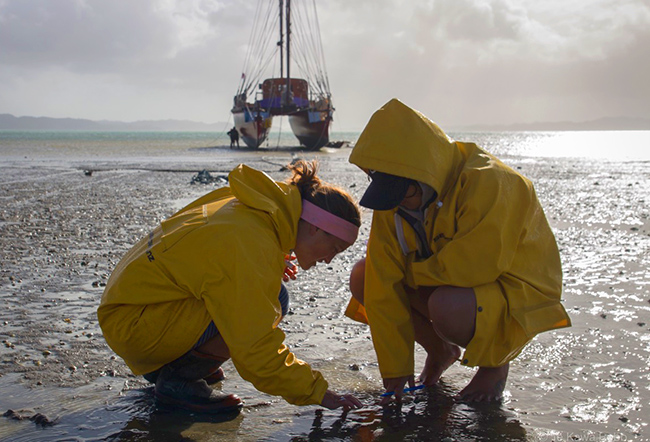
Te Moana Ora is our aspiration for our tamariki (children), rangatahi (young people) and hapori whānui (wider community). The moana is a place we go to collect kai for our whānau, to meet friends, swim, surf, fossick, replenish ourselves and a place of many childhood memories. No matter who or where you live the moana is an important source of cultural and physical sustenance to all people of Aotearoa.
Shore identification guides
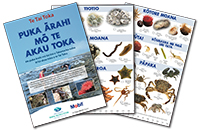
Use these guides to help you identify the animals and plants you find on your local shore. There are guides for Northern and Southern NZ rocky and sandy and muddy shore environments.
- Māori Northern NZ Rocky Shore Guide (PDF)
- Māori Northern NZ Sandy and Muddy Shore Guide (PDF)
- Māori Southern NZ Rocky Shore Guide (PDF)
- Māori Southern NZ Sandy and Muddy Shore Guide (PDF)
Marine Metre Squared (Mm2)
Mm2 is a way of monitoring the biodiversity on your local shore and recording changes over time. Use these forms to record your data, which can then be entered online.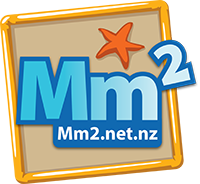
For further information, visit the Marine Metre Squared (Mm2) website.
Activity books
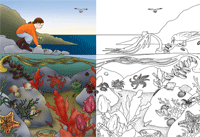
These educational activity books feature the animals and plants that are found between the tides on New Zealand's Rocky Shores and Mudflats. The illustrations give indications of how the plants and animals survive in these environments.
- Māori Mudflat Mysteries | Ngā Kōraha Māminga (PDF)
- Māori Rocky Shore Who Eats Who | Te Akau Pōhatuhatu: Ka kai ā wai i ā wai (PDF)
Hoea te waka
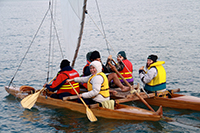
Starting with an exploration of the traditional Māori concept of guardianship of land and sea, these modules include information on kaitiakitanga, whakataukī, water health, monitoring the environment, plankton, waka, seaweed, traditional navigation and fishing technologies.
Hoea te Waka is a series of activities that can be carried out individually over a number of weeks, or grouped together for an intensive multi-day programme.
- Kaitiakitanga (PDF)
- Whakataukī (PDF)
- Te Wai Tai me te Wai Māori – Water Health Survey (PDF)
- Īnanga in the Estuary (PDF)
- Ngā Tini o te Waitai – Plankton (PDF)
- Marine Surveys (PDF)
- Marine form and function (PDF)
- Navigation (PDF)
- Māori fishing technology (PDF)
Īnanga (whitebait) activity
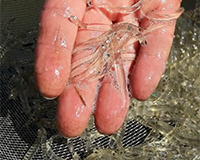 Īnanga are a popular food. Learn about the lifecycle and migration of the īnanga and understand how human activities are affecting them and what we can do to reduce our impact.
Īnanga are a popular food. Learn about the lifecycle and migration of the īnanga and understand how human activities are affecting them and what we can do to reduce our impact.
- Instructions for Īnanga Game (PDF)
- Īnanga Game Cards (PDF)
Life on the edge
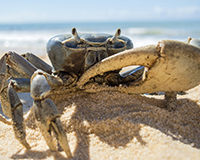 More than 75 per cent of New Zealanders live within 10 kilometres of the coast. Through these activities, looking through the eyes of another animal that lives on the coast, we can get an idea of the day-to-day pressures that they are facing.
More than 75 per cent of New Zealanders live within 10 kilometres of the coast. Through these activities, looking through the eyes of another animal that lives on the coast, we can get an idea of the day-to-day pressures that they are facing.
- Seashore Survivor – Māori (PDF)
- Seashore Survivor – dual language (PDF)
- It's a Crab's Life activity book (PDF)
Ki uta ki tai
From the mountains to the sea, all our waterways are connected. This activity looks at how our practices on land can negatively affect our aquatic and marine environments and our kai moana.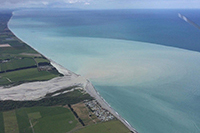
- Big Fish Little Fish, Survival in the Estuary – Māori (PDF)
- Big Fish Little Fish, Survival in the Estuary – dual language (PDF)
Te Moana Ora and Mātauranga Māori
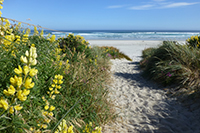 Our moana in Aotearoa is estimated to hold up to 85 per cent of our wildlife. Marine biodiversity refers to the different types of plants and animals. A healthy moana is generally indicated by an abundance of different animal and plant species – the more the better! Each species has a specific role and function within the whakapapa of Tangaroa, widely known as the marine ecosystem.
Our moana in Aotearoa is estimated to hold up to 85 per cent of our wildlife. Marine biodiversity refers to the different types of plants and animals. A healthy moana is generally indicated by an abundance of different animal and plant species – the more the better! Each species has a specific role and function within the whakapapa of Tangaroa, widely known as the marine ecosystem.
As well as providing the food that we consume, the moana produces up to 70 per cent of the earth's oxygen in comparison to 28 per cent produced by the rainforest. Our health, therefore, is greatly dependent on the health of the moana. It must remain healthy (i.e. free from contaminants and pollution) with an abundance of biodiversity providing for marine food webs for animals to live and thrive.
Mātauranga Māori provides centuries of environmental observations about Aotearoa and even the wider realm of Te Moana Nui a Kiwa (The Pacific Ocean) too. The Polynesian voyages were some of the greatest ocean voyages in history. Expert knowledge of the wind, seas, animal migrations and celestial navigation was required and was passed down through generations. Before explorers like Christopher Columbus set sail on their explorations, Polynesian voyagers had already populated hundreds of islands centuries earlier. The moana was a great highway that allowed migrations to new homes, resources and sustenance.
Historical narratives provide a glimpse into what our marine environment was like before human impacts such as global warming, pollution and over-exploitation of its resources. Some of these same narratives exist in a local context where our elders have seen the impacts of land development and pollution in their time. Science coupled with Mātauranga Māori can enhance our understanding of what it takes to reach 'Te Moana Ora'.
The intention of these resources is to provide tools to empower our local communities to take part in monitoring, researching and discovering more about our coastal ecosystems. With these tools and a bit of action we can collectively contribute to Te Moana Ora. The resources are designed to be used in either the classroom or marine setting and provide insight into the role and function of the various components of our unique marine environment.
Co-sponsor
 The resources in this project were developed with funding from the MBIESSIF funding. The resources and suggested activities have a Mātauranga Māori focus and are supported by funding from the Institute of Environmental Science and Research (ESR) Te Whare Manaaki Tangata, Taiao hoki.
The resources in this project were developed with funding from the MBIESSIF funding. The resources and suggested activities have a Mātauranga Māori focus and are supported by funding from the Institute of Environmental Science and Research (ESR) Te Whare Manaaki Tangata, Taiao hoki.
Other useful resources
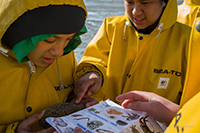 The New Zealand Marine Studies Centre (NZMSC) produces a range of resources to support education programmes and research activities. Some of these, such as the marine life database, can be used online. Others may be downloaded.
The New Zealand Marine Studies Centre (NZMSC) produces a range of resources to support education programmes and research activities. Some of these, such as the marine life database, can be used online. Others may be downloaded.
These materials may be reproduced for educational purposes, but please ensure you say where they have come from.
NZMSC Resources
Check our resources page for more activities.
Facts and Science: Marine
See the latest report on the state of our marine environment from the Ministry for the Environment.
New Zealand's Marine Biodiversity
Read more about diversity in the ocean on the Department of Conservation website.
Waka hourua
Learn more about traditional Polynesian voyaging on the Science Learning Hub website.